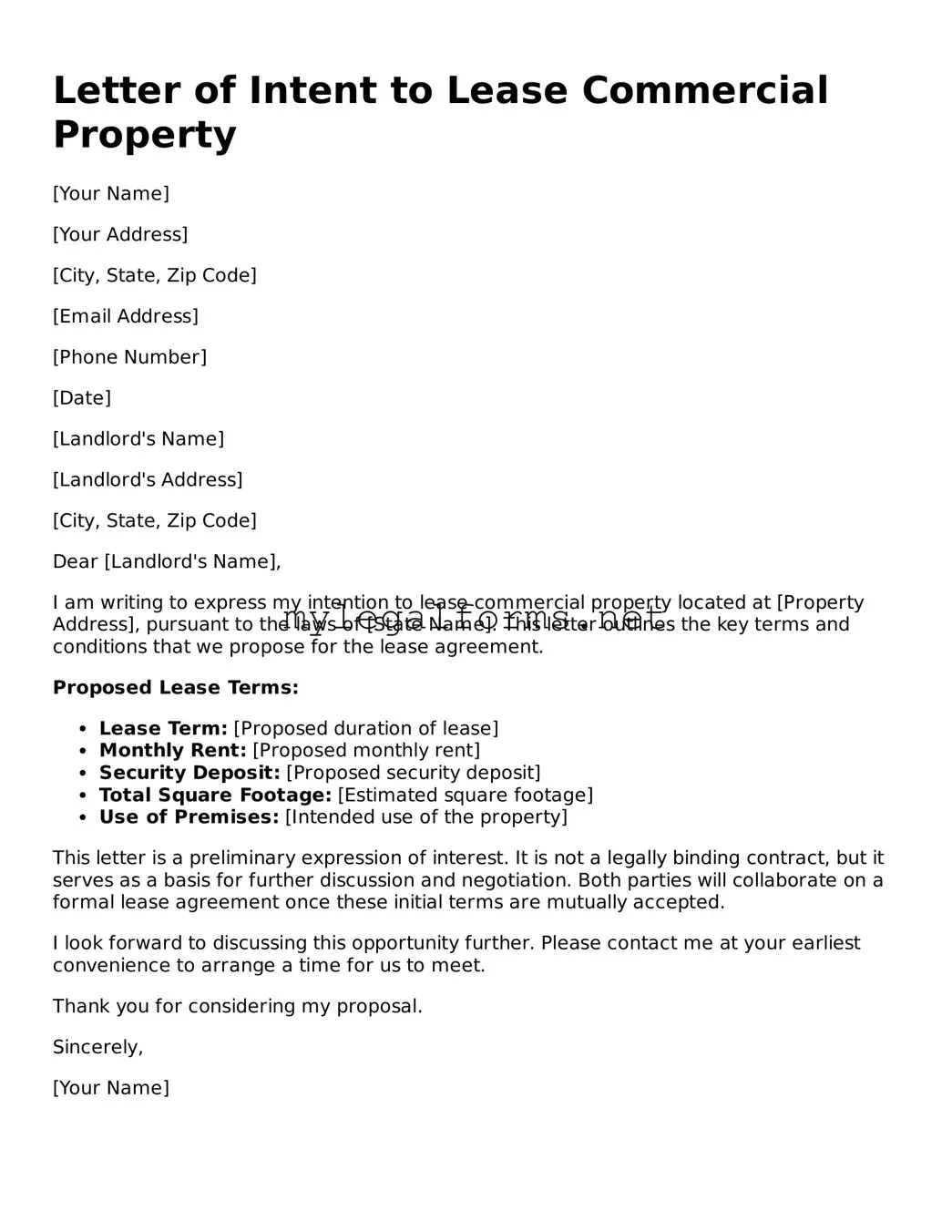Attorney-Approved Letter of Intent to Lease Commercial Property Form
A Letter of Intent to Lease Commercial Property is a document that outlines the preliminary terms and conditions of a lease agreement between a landlord and a prospective tenant. This form serves as a starting point for negotiations, helping both parties clarify their intentions before entering into a formal lease contract. Understanding this document is essential for anyone looking to lease commercial space, as it sets the stage for a successful business relationship.
Launch Letter of Intent to Lease Commercial Property Editor
